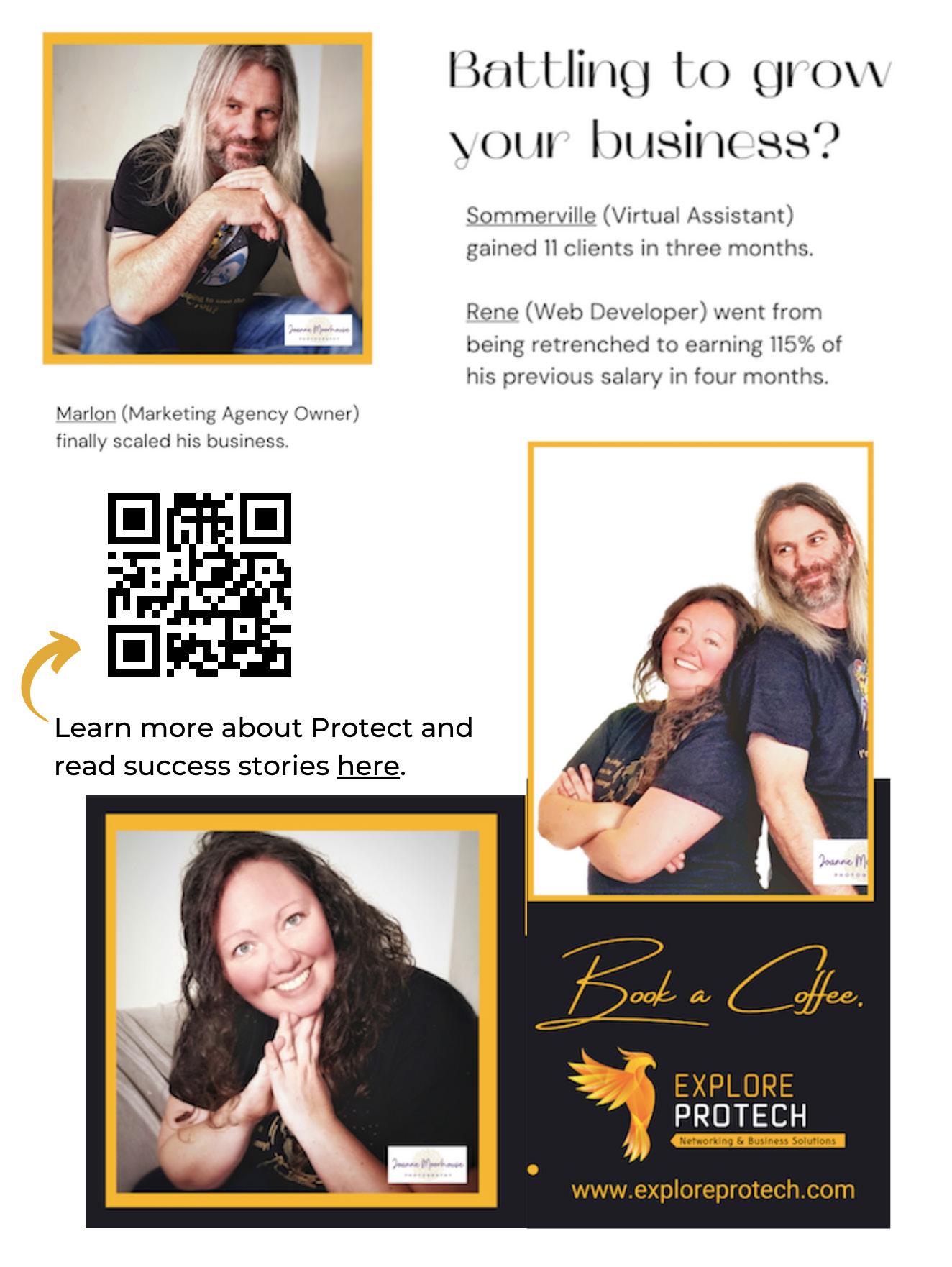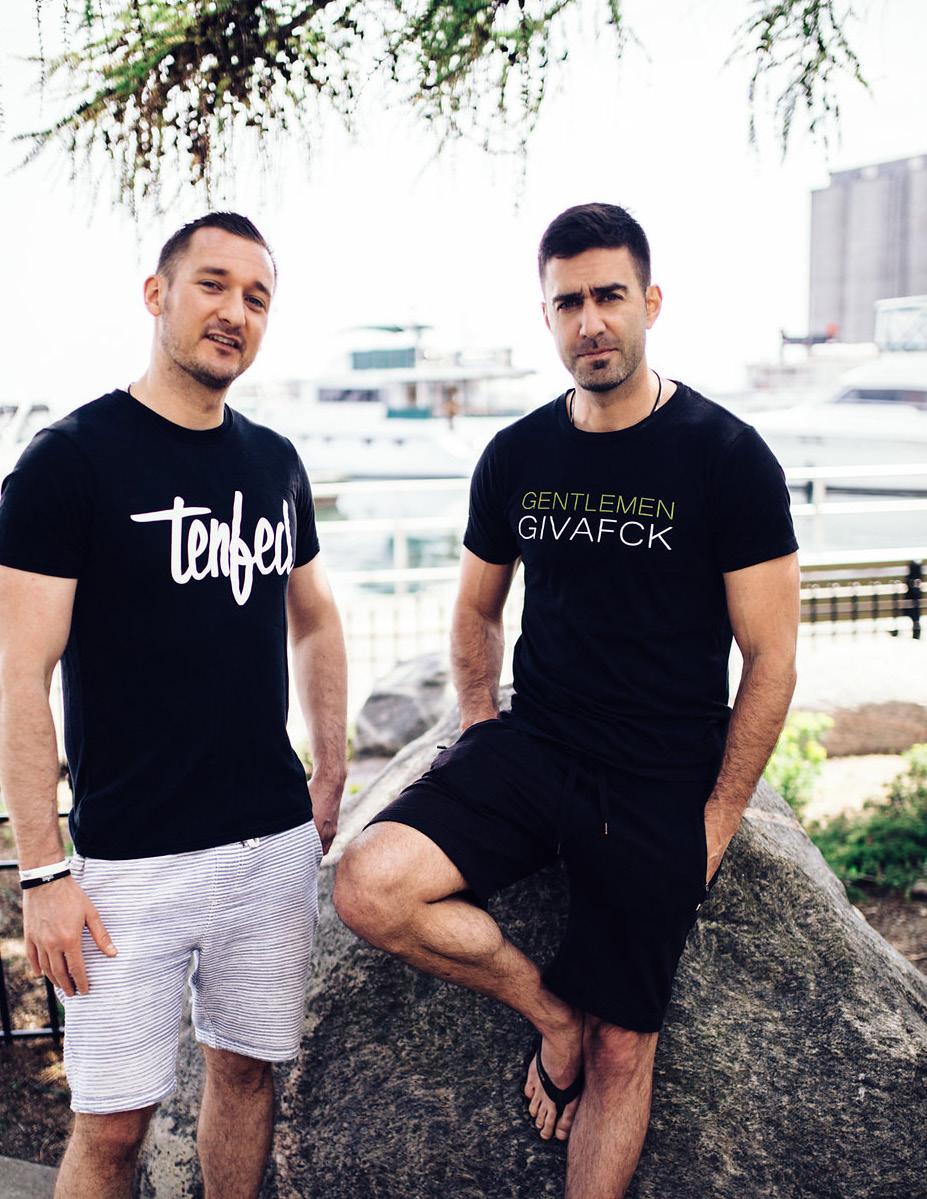

What Else Is Possible
by Dr. Mary Meduna-GrossWhat else is possible?
I started this magazine with three objectives. I wanted the magazine to validate the values the conscious entrepreneur lives by, I wanted to inform conscious entrepreneurs how to build their business and alignment with these values, and I wanted to inspire the conscious entrepreneur.
When I asked myself how I wanted to inspire the conscious entrepreneur, the initial response was “to grow”. This triggered resistance in me almost immediately because this feels like hustle, competition; another way in which we compare ourselves to others. This
is the antithesis of what we are creating here.
And yet, it is also true that to live is to grow. When we stop growing, we start decaying.
So how do we grow without getting caught up in the hustle?
As a conscious entrepreneur this may be the most important question you ask yourself. Your business cannot grow beyond you. This means that if you aren’t growing, you and your business are in a state of decay.

You also know that the hustle isn’t sustainable. It takes too much energy, the energy you’re putting out is the energy
you’re getting back (do you really want that energy back?), and you’re taxing your health and your relationships in the process, not to mention your own wellbeing.
Even when the hustle does create the results you want, you are probably too jaded to celebrate the victory. Your experience becomes dull at best, and painfully uncomfortable at worst. In this state, you can’t possibly make the impact that you desire to make.
What else is possible?
I believe that we fall into the hustle trap because we don’t know what other options we have. For this reason, I have relaunched the ConsciousPreneur podcast as the Fully Alive podcast. In these conversations, we will explore what it means to live more fully, how to expand our impact and to experience all of this with a sense of ease. I’d love to engage with you around these topics. Check out the Fully Alive podcast and then join our Fully Alive Facebook group to connect with like-minded entrepreneurs as we learn and grow together. D
With Gratitude, Mary
Your business cannot grow beyond you. This means that if you aren’t growing, you and your business are in a state of decay.Mary
The
Eunicia Peret SpringsteadBE THE INSPIRED AND RESILIENT LEADER YOU WERE MEANT TO BE
BOULDER, CO
JUNE 7 & 8, 2023
Come join hundreds of entrepreneurs invested in their personal growth at the second annual Conscious Entrepreneur Summit in Boulder, CO on June 7-8, 2023.



Over the course of two jam-packed, fluff-free days you will:
Hear from some of the most highly soughtafter speakers in leadership, consciousness and human transformation.
Build authentic connections with like-minded entrepreneurs who want to maximize business impact while becoming the best possible version of themselves
Learn to become more authentic and vulnerable in your leadership style to create stronger team connections, a more inspiring culture and better company outcomes.
USE CODE CONSCIOUSPRENEUR FOR $150 OFF YOUR TICKET!
Speakers
Keith Ferrazzi #1 NYT Bestselling Author, Advisor, Entrepreneur, and Investor
#1 NYT Bestselling Author, Advisor, Entrepreneur, and Investor
 Liz Fosslien
Expert on emotions at work and bestselling author
Liz Fosslien
Expert on emotions at work and bestselling author
 Gay Hendricks
Author of The Big Leap, creator of the Zone of Genius
Dr. Srikumar Rao
Gay Hendricks
Author of The Big Leap, creator of the Zone of Genius
Dr. Srikumar Rao
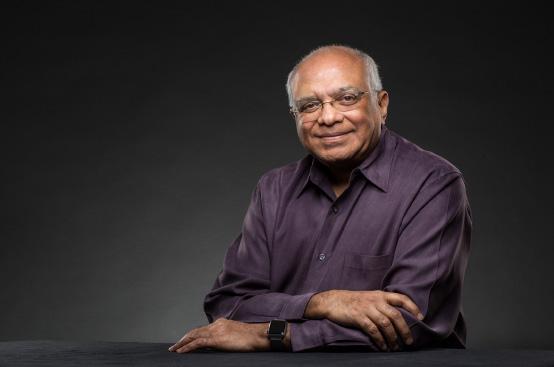 Happiness Guru and CEO and Founder of The Rao Institute
Kim CEO at Moon Mental Health
Happiness Guru and CEO and Founder of The Rao Institute
Kim CEO at Moon Mental Health

 Vlada Bortnik CEO of Marco Polo
Vlada Bortnik CEO of Marco Polo
The only in-person event 100% dedicated to the well-being of entrepreneurs.
HOW TO CUT THROUGH ALL THE NOISE AND OPINIONS...
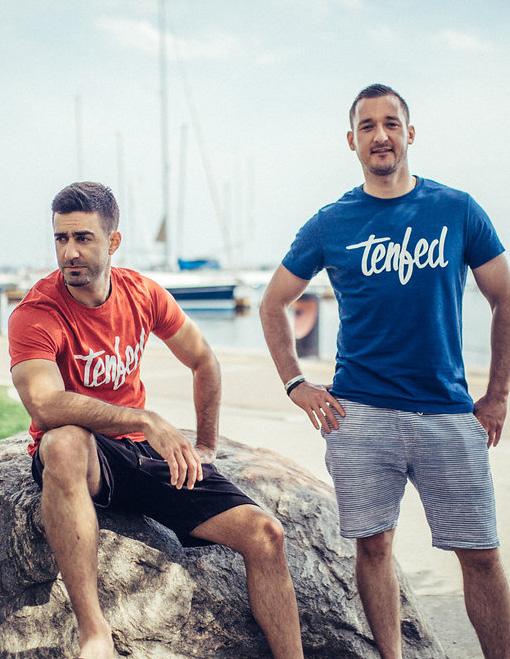
...when starting a new business
Starting a new business can feel overwhelming, but it doesn’t have to be. It’s impossible to avoid all the friends, family and marketers that will bombard you with their opinions, and this isn’t necessarily a bad thing, but you will want to stay true to your core mission and be sure to cut through all the noise and stay focused!
When we started TENFED back in 2015, we had a simple mission, “To provide as many meals to people in need as possible”. Pretty straight forward. Everything that we do revolves around this simple mission. We sell apparel, candles, and we will even attach our feeding program onto services such as concert tickets. Now this isn’t to say that we didn’t have absolute chaos happening in front and all around us! We had what seemed like a million opinions coming at us and as the years went on, the marketing emails that we received seemed to multiply every day.

Always someone who wanted to help and who saw how we could be better. Did they want to help us genuinely, or did they see an opportunity to make money themselves? Of course it can be both, but this can be challenging to distinguish. But how do you know who to listen to and who to trust!?
It can be difficult to cut through all the noise of people telling you what to do and how to do it. When you feel like you’re at a fork in the road, take a step back and ask yourself what the most important thing is to do next. Then prioritize the tasks you need to complete to get to that goal. Breaking down tasks into manageable chunks can help you stay focused and reduce stress. When making decisions, research your options and make sure you understand the pros and cons. Don’t be afraid to ask for help. Just be picky with who you go to! It can be helpful to consult with an experienced mentor, family mem-
ber, or friend to get advice and make sure you are on the right track. Most importantly, take your time and don’t rush the process. With patience and hard work, you will be able to get your business off the ground.
Take the time to understand your goals and the vision for your business. Once you have established what your goals are, it is important to do your own research about the industry you are entering. This will help you make informed decisions about what route to take, what products or services to offer, and how to best go about marketing and selling them. Lastly, it is important to stay open to feedback and new ideas, but ultimately trust yourself and your own judgment.
Be open to new ideas, but the most important advice we can give is that you must pick a direction and go with
The journey is the best part. Get lost in the process.
it! You will either move forward and succeed, or you will find out what doesn’t work and then re-adjust. As long as you are ok with this process, there is nothing to be afraid of. This always goes back to the classic quote by Thomas Edison in his explanation of failing 1000 times before he succeeded in creating the light bulb. “I didn’t fail 1000 times. The light bulb was an invention with 1000 steps”.
When considering advice for running your business, it is important to identify the source of the advice. Ask questions about their credentials, expertise and experience in the area you need advice for. Furthermore, research their background and any relevant references to verify their advice. Addi-
tionally, look for feedback from other business owners who have used their services and/or taken their advice. Finally, consider your own intuition and decide if the advice is applicable to your business and if it aligns with your goals.
When it comes to our business, Tenfed, we have been knocked down more times that we can count at this point. We have made some incredibly big mistakes and learned a lot from each one. The further that you go along on your journey, the more you begin to intuitively see the authentic from the inauthentic. You begin to get a good idea of who is there to help you, and who is there to profit from you. This is why staying true to yourself and your mission is the most important. The noise will go on forever, but you will eventually gain the ability to block it out and become focused!
With our business, Tenfed, we wanted to create clarity right from the beginning! Before it became Tenfed, it was something completely different. We were originally partnering with multiple charities and speaking to multiple audiences! We began to hone in on something much more specific. Tenfed – Every single item sold provides TEN meals to children in need all around the world! In creating that focus, we knew what our goal was. Now it was time to figure out exactly how to get this out to the world. Where we got stuck was in the questions; are we a company that sells at events? Are we an online business? Are we focused on partnerships? Do we sell apparel? Do we sell candles? Do we sell multiple items or do we focus on ONE thing? There are SO many angles and options, and if you ask 100 people, you will get varying answers. So boiling all of this down to what you feel is right is most important. From there, you go forward! More mistakes have been made than we can count as we mentioned, but we have everlasting gratitude for

When making decisions, research your options and make sure you understand the pros and cons
all of these mistakes, for it lead us to exactly where we are at. Not only have we become better at business, but we have become better at relationships, we have become better at controlling our emotions, we have become better at recognizing opportunities.
The journey is the best part. Get lost in the process. Have fun researching and exploring new ideas and systems. Be okay in failing. It is better to fail your way forward than to stay frozen in fear of failing!
If you would like to know more about Tenfed, just head over to tenfed.com Our IG is @tenfed, or www.prints4purpose.com. This is a way for individuals, businesses, or teams to join our mission and create their own designs. Every single item sold through Prints4Purpose will still provide TEN meals to those in need through a partnership with Tenfed!

About Tenfed
you look great and feel comfortable, but you’re also making a statement that you’re part of the solution. It’s a purchase that feels good.
So far to date, we’ve been able to help provide over 450,000 meals to people in need around the world, including locally here in Canada.

Tenfed is a clothing company based in Toronto that offers unique, yet meaningful, everyday apparel. Tenfed launched in August 2015 with a mission to provide as many meals as possible to people in need. For every Tenfed item that is sold, TEN meals are provided to people suffering from

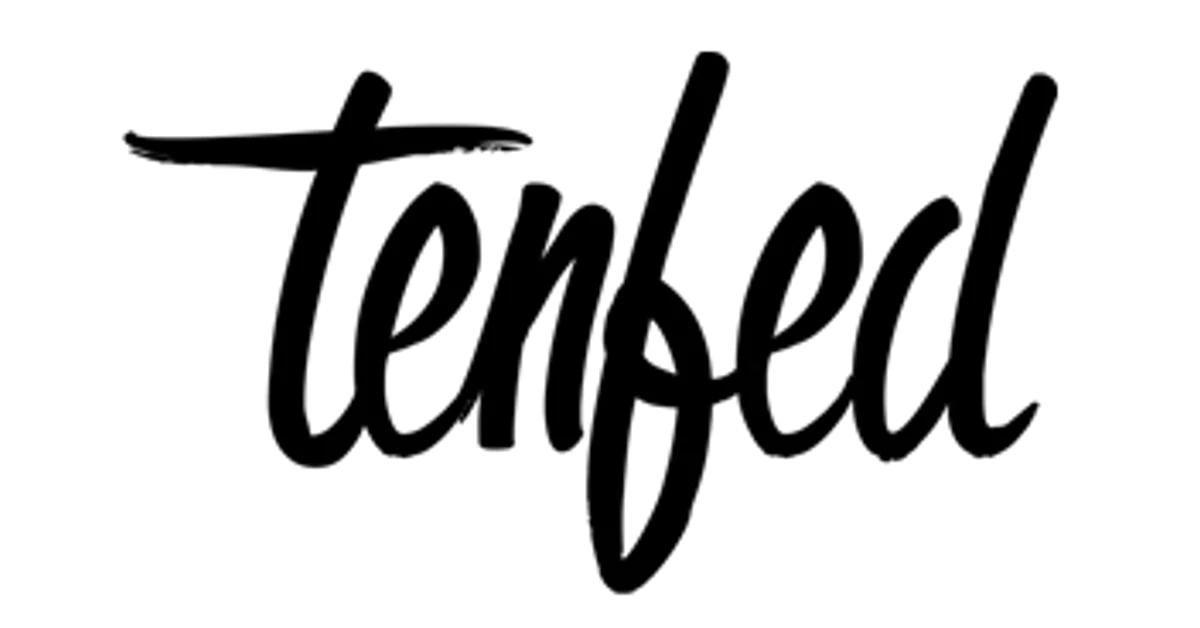
food insecurity in Canada and around the globe.
Tenfed is more than just a clothing brand - it’s about having meaning and purpose behind what you choose to wear. It’s about having style while changing the world at the same time. When you wear Tenfed, not only will
The Art of Therapy and Branding
 Natasha Nicole Ungerer
Natasha Nicole Ungerer
By using creative exercises and techniques, businesses can break down barriers in creative thinking
In today’s world, visual communication is more important than ever. With the rise of social media and online marketing, companies have to constantly find new and creative ways to capture the attention of their audience. This is where the use of art therapy in graphic, brand, and visual design comes into play.
As a creative entrepreneur, I pride myself in understanding the power of art and its impact on emotions and psychology. I started my first business, DesignerArt, in 2019 which offered art consultation and graphic design services. At that time, the core of my business was in art installations and consultations. However, after qualifying as an art therapy practitioner in 2021, I launched another company called Scribble Art which assisted children and young adults in connecting with their emotions and overcoming difficulties using a creative outlet.

As Scribble Art began to venture into the business world, we developed programs and skills for personal growth and development, success as a team, problem-solving skills, and breaking down barriers in creative thinking. By combining these skills with my expertise in graphic and brand design, there has been immense growth Designerart as well as those of its partners, including Explore Protech Tribe, The Legendary Kraft Digital, Paradox
Rocks!, and The Sommerville Agency. So, how exactly does art therapy play a role in the world of graphic and brand design? The answer lies in the science of art and its impact on emotions and psychology. The use of color, symbol-
ism, and composition can all be used to influence the way people perceive and respond to a visual message.
Color psychology, for example, is the study of how colors affect human behavior and emotions. Certain colors can evoke specific emotions and reactions in people, which can be used strategically in design to create a certain mood or feeling. For example, blue is often associated with trust, calmness, and security, while red can evoke feelings of passion, excitement, and urgency. Although not an exact science (this is where it gets fun) as various people are often lead by various triggers and emotions based on their own personal experiences. This is where I have always stressed the importance of knowing who you are targeting in order to understand their lives and how to communicate with them successfully.
In addition to color, symbolism also plays a crucial role in visual communication. Certain images or symbols can carry cultural or personal meanings that can evoke specific emotions or ideas. For example, a red rose is often associated with love and passion, while a white dove is often associated with peace and purity. However again this comes back to cultural and personal beliefs meaning you need to know what you are saying and who you are speaking to.
Composition, or the way elements are arranged in a design, also has a psychological impact on the viewer. By strategically placing elements in a design, designers can guide the viewer’s eye and create a certain flow or emphasis. For example, a strong focal point can draw the viewer’s attention and create a sense of hierarchy and importance.
By combining the science of art with the principles of brand and visual design, art therapy can help businesses
create a deeper connection with their audience. The use of art therapy techniques can help businesses better understand their target market, including their emotions, motivations, and behaviors. This understanding can then be used to create a visual message that resonates with the audience on a deeper level.
Art therapy can also be used to help businesses overcome creative blocks and generate new ideas. By using creative exercises and techniques, businesses can break down barriers in creative thinking and generate fresh, innovative ideas.
Ultimately, the use of art therapy in graphic, brand, and visual design can help businesses create a more authentic and meaningful connection with their audience. By understanding the science of art and its impact on emotions and psychology, businesses can create visual messages that not only capture the attention of their audience but also evoke a deeper emotional response.
For me, the use of art therapy in my design work has been a game-changer. By combining my skills as a life coach and art therapy with graphic and brand design, I have been able to create a unique approach that sets me and my clients apart from others in our industries. Through the use of the art world’s understanding of visual design and psychology, I am able to take brand and graphic design to an entirely new level.
About Natasha
Natasha Nicole Ungerer is a highly talented and accomplished professional in the creative industry, with a unique skill set that combines art therapy, graphic design, and visual marketing to great effect. She is passionate about using her skills to help others and contribute to the success of small businesses.

In today’s world, visual communication is more important than ever.
From Stuck to Inspired

Start by Putting Yourself in the Right Environment
In 2017 I had hit a low point in my life. I had been in a series of jobs that were unfulfilling and turned out to be quite differet than what I had hoped for. I knew I wanted to make a difference in the world beyond being a cog in the wheel, but I had no real direction. Focusing on why I didn’t fit into the work culture I kept finding myself in, I pursued freelancing. However, it was not what I ultimately wanted and somewhere deep inside I knew it.
It was that year I attended my first TedxMileHigh event. TedxMileHigh is Denver’s independently organized TED organization. This was the start of a new part of my life’s journey,
attending events and engaging communities of people who represented the direction I wanted to move in life. I attended a lot of cultural and entrepreneurial events, met people and was exposed to a lot of interesting ideas. I had no viable idea of my own, but people were patient with me. They still let me engage, ask questions and have conversations. However, without a pursuit of my own, I would find myself, once again, at a large corporation where I was disappointed when reality didn’t meet expectations.
Then Give Yourself Time to Think
At the last TEDxMileHigh event before the pandemic, I heard many versions of the same story…
“I’m inspired by these talks. But, Monday I’m gonna go to work. Tuesday I’m gonna go to work. Then, Wednesday I’ll meet up with my well-meaning but risk averse friends and family and before I know it, I’ll be right back in the same mindset I had before, feeling stuck where I am.”
I wanted to help counter these messages, so I developed an idea for a podcast where I’d interview people who pursue their passions once a week. During an August 2020 backpacking trip, I had a very powerful spiritual experience. It would lead me to launch Action’s Antidotes: Your antidote to the mindset that keeps you settling for less. The podcast is a series of 30–45-minute interviews of people with interesting pursuits who are not “living by the script.”

Consistency
Recording this podcast weekly, and continuing to engage networking groups, even when they all had to be on Zoom, helped me establish a network of people who were far more likely to see things in a similar manner to the way I do and have more experience and success on their journeys. The two networking groups I am most involved in are a direct result of the podcast. The podcast gave me the credibility to become a member of a leads group called Elevated Results Group and I got involved with Conscious Business Connections after interviewing the founder on my podcast.
26% of podcasts on Spotify have only one episode. A lot of people have ideas, but don’t
What we think about, whether positive or negative, is what we get more of
put any meaningful effort into them. Even those of us who want to make a difference beyond just making money (i.e. ConsciousPrenuers) need to be selective about who they give their time and energy to. If we were to engage everyone who had an idea and a set of complaints, there would be no energy left for our own businesses. Therefore, for most business owners, there is a necessary barrier to entry to get anything more from them than the 5-minute conversation at a networking event. The work I put into Action’s Antidotes overcame that barrier.
Trust Your Instinct

My journey to starting Reclaim Your Time took me back to an instinct I had a long time ago. In the late 2000s when I first started seeing people spend more time on Facebook and ignore the people in front of them to look at their smart phones, I knew it was not going to be a good thing for humanity. Subsequent issues with loneliness, anxiety, depression, violence and suicide confirmed this suspicion.
The pandemic brought me to a breaking point where I had to do something about my own technology addiction. It took a few tries, but in 2022, I was able to consistently keep my total screen time (all forms of screens, T.V., computer, phone, etc.) under 50 hours per week. This is over 40% less than the average American. With Reclaim Your Time, I am betting that after seeing movies like The Social Dilemma, losing friends to the divisiveness of online content and experiencing the kind of loneliness many of us have, many others are ready to follow
me on this journey. The modern world is full of institutions that cause us to doubt our instincts. In most big corporations, people are encouraged to defer to the person above them on the “chain of command.” For many, this comes after years of conditioning through our education system to do what is assigned to them and take its evaluation as a measure of self-worth. When I think about this, I realize that I had to expose myself regularly to people who had adapted a different mindset, one around learning by doing and not waiting for the approval of an authority figure, for a few years before I was ready to start my true passion project.
Sometimes You Have to Shift Your Focus
For years, I was constantly trying to convince people that the amount of time we spend in front of screens, and the amount of time we spend alone, was a huge problem. Now, the world has come around. Or, at least, my early adapters have come around. What I need to convince them is that there is a solution and that this is something worth pursuing. I need to focus on
the positive. I need to share stories about things like how I launched a podcast and trained for and completed Ride the Rockies all while having a fulltime job, or how I am building my business now.
What we think about, whether positive or negative, is what we get more of. For a decade and a half, I spent far too much time thinking about all the things I don’t want, from technology addiction to bureaucracy, only to see it become more and more prevalent in the world with each passing year. Now, it’s time to focus on something different.
Stephen Jaye is originally from Long Island, New York, studied Meteorology in the Midwest and now lives in Devner, Colorado. His mission now is to help humanity move forward into a new healthier era through inspiration, community and spending less time in front of screens. In his spare time, he enjoys cycling, traveling and pretty much anything social and goofy.
www.lessscreentime.com
www.actions-antidotes.com
THE CONSCIOUSPRENEUR GROUP
The ConsciousPreneur magazine and podcast deliver content, but what is most important is community Even if you define yourself as a solo-preneur, you need a network of experts who are ready to serve and support you. Join the ConsciousPreneur group to interact directly with our contributors!
THE CONSCIOUSPRENEUR HAS BEEN CREATED TO:
Help the conscious entrepreneur recognize themselves and the values that drive their business
This group is a free resource for conscious entrepreneurs to share, engage, learn and connect.
Offer business resources that align with these values

Inspire the conscious entrepreneur to dream even bigger
JOIN TODAY
JOIN TODAY
IN THIS COMMUNITY, WE WILL BRING THE CONTENT INTO YOUR PERSONAL EXPERIENCES SO THAT AS YOU GROW, YOUR BUSINESS GROWS.
Happier employees are more profitable

Every Business Metric Can Be Improved Upon With Increases In Employee-Life Satisfaction.
Employee mental health is a hot topic, with many companies intending, or attempting, to address the subject. Some companies are offering counselling, others are bringing in coaches to open up debate. This may seem daunting to explore, especially when your focus is on sales and bottom-line profits. What if there was a win-win solution that not only addressed employee mental health, but actively fosters the growth of employee well-being whilst improving bottom-line profits? What if this was a simple task that could be done instantly and have an instant, quantifiable impact?
Happy Employees Grow Themselves And Your Business.
Happier employees are more productive, motivated, creative, and give better customer service. They take less time off, make better co-workers, are calmer, make better decisions and stay with the company longer. Sales and profits will increase, recruitment and training costs reduce and everyone, from the boardroom to the shop-floor, will find work more enjoyable.
Instead of wondering how to attract more customers, better employees and larger profits, consider the impact on these metrics if you increase the happiness of your employees. This doesn’t involve “smiling policies”, wage increases or providing entertainment. I recently spoke with an unhappy employee of a large organisation. When I asked what the company could do to improve their life-satisfaction, they listed six things; none of which
have any need for company resources. The first thing listed was if their supervisor could complete schedules further in advance. They never even mentioned the salary.
It’s Not Your Job To Find Solutions.
The last person who should decide what would help employees’ mental health is the boss. Whilst the change in culture comes from the top down, the driving force behind effective change is bottom up. Neither is the boss the best person to find out what employees want. Employees are unlikely to give straight, honest, feedback criticizing the company and would likely be happier if they had your salary, house, and car.
The key to success is having the right people, asking the right questions, within a framework which allows for solutions to be formed as low down
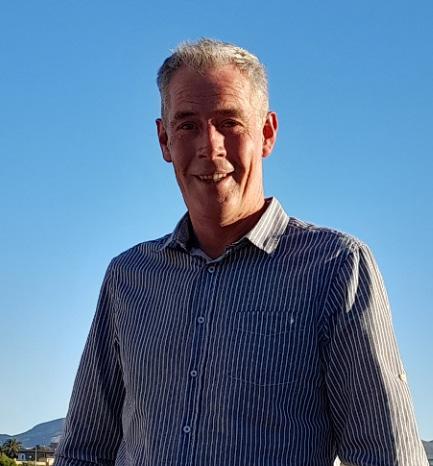
the organizational structure as possible. Can the unit manager and their team solve this or does it need escalating? Would all company employees benefit from this solution? Employees working shifts find it hard to plan regular activities outside of work. They may want to participate in further studies, sports, hobbies, community action, start a side business or plan a weekly family night. Whilst weekends and holidays may be key shifts, there is no harm in allowing employees to nominate a fixed time off each week. These fitter, more fulfilled and relaxed employees will perform better in the workplace. If you can extract their message and do all you can to facilitate the change needed, the workforce will be happier.
Tadysh Business Model
I developed a model which can be implemented in any organization, of any
size or complexity. My video training course covers everything you need to know about how to change the culture, engage the employees, extract the important information that could change peoples’ lives and measure the success of growing happiness.
Measuring Happiness
Whilst happiness as a concept is multi-faceted, complex and individual, there are many common themes. Good diet, sleep, exercise, healthy relationships, meeting financial needs, clean air and natural surroundings are all good for mental health. These form the basis of the Tadysh Happyometer – www.tadysh.com This is a free website tool which, via 20 questions, measures general happiness and provides tips to increase the frequency of happy habits. Users complete the quiz monthly and can compare their scores over time. The scores are split into spheres of Social, Mental, Physical and Professional Happiness.
Measuring The Happiness Of Groups
With Tadysh Group Keys, managers
can see an anonymous collation of the results for anyone assigning their profile to a specific key. No one knows who gave what answers, but the collective score gives a monthly indication of the group’s mental health, and if this is increasing or decreasing. With organizational parent and child keys, an international restaurant chain would have a metric for each restaurant, area, region, and country. Employees complete the quiz to help the company know if their cultural changes to employee growth are being effective. The benefit to the employees is they are self-coaching their happiness and benefiting from monthly mental health audits. It isn’t just what the company can do, but what the individuals can do themselves.
Measuring Personal Happiness
This system works from the bottom of the structure upwards, but what about those at the top? Happiness is individual and the success of your business is affected by your own well-being. You care for the employees and need to ensure you take equal care of yourself. What affects your happiness month by month?
What can you do to make next month happier? What is holding you back from increasing your own happiness?
Using your own criteria, and combining this with executive coaching, I create an individually bespoke quiz, which you complete monthly or weekly. Each month, with online face-toface coaching, we examine one theme to grow that area. This programme focuses on what makes you tick and how you can systematically grow your happiness. Clients understand the need to make time to do the things that bring them joy and focus on addressing issues which reduce their happiness, with regular monitoring.
Fostering the growth of employee well-being is not something to see as a chore or a cost. It is the simplest, cheapest and most rewarding thing you can do to make a positive impact on the bottom line. Instead of tackling business metrics, grow the happiness of your business and the metrics will grow naturally.

About Adrian Grainger.
I train organizations how to measure and grow the happiness of groups and coach individuals to grow their own happiness. For more information, visit www.tadysh.co.uk or email adrian@tadysh.co.uk
Happy employees grow themselves and your business.
The Thawing of Sales & Marketing

As a marketing strategist, I am often asked “What’s the best way to attract WARM leads into our new client pipeline?” Let me start the way my curious, creative brain loves to start when answering a question: With another question!
What’s the passionate spark behind the solutions you offer?
In my role as a social scientific methodologist, I teach that questions come in three basic sizes. Each has a place in all phases of marketing and sales (research, networking, promotion, advertising, or even face to face sales).

• Small yes/no or true/false questions are great for sorting out basic assumptions, knowledge, or readiness. When you ask for a show of hands, you invite curiosity about a specific opinion or experience. The limitation of small questions is that they actually make assumptions and hold the recipient to a pre-defined box or category.
• Medium-sized questions offer multiple choice answers. These allow for a little more nuance and thought. While medium-sized questions are useful in inviting some connection, the categories you offer are based on pre-conceived ideas about how each individual might think or behave. If you are looking for deeper connection and insight – the AHA moments that motivate people to act – you’ll need to move beyond such limited scenarios.
• Big questions are where the magic happens. Although these are open-ended, they can still be quantified to inform more personalized identification (using agree-disagree
scales, for example). Big questions are more about the “why” than the “what.” These questions are attitudinal and behavioral “psychographics” that form the substance of high-quality lead quizzes and personality assessments.
When I ask about your passionate spark, I’m asking a very big question. Mind you, I’m not going to accept your first answer. In fact, it takes a few hours of prep plus 90 minutes of my proprietary Strategic Bubble Mapping process to just begin to redefine most of my own clients’ fundamental propositions. And they ALL benefit from this non-habitual way of thinking, no matter how long they’ve been offering their products and services.
In today’s marketplaces, businesses often lock in on succinct descriptions of features (what they provide and how they do so). If they are heart-centered “ConsciousPreneurs,” they do their homework and extend the focus to benefits (what’s in it for the client). Yet in this age of emotionally triggered, A-I influenced, 24/7 messaging, it is critical to go even deeper than features and benefits. I do this by tricking my clients away from their habitual thinking and into their inspired minds. Once we strip down and delve into what we truly hope for, we open the boundaries of what’s possible, and we can more fully excavate the charged motivations behind our products and services. THIS is where the gold lies in attract-
We must listen to the inner muse, who comes from a place of passionate conviction
ing like-minded, emotionally charged, motivated clients. The only thing left to do to attract the right warm leads is to educate them and give them some personal insight as we do.
Shifting from Masculine Models to a Healthy Mix of Femininity
Commerce has traditionally capitalized on shared perceptions of accepted behavior by overemphasizing the downsides of non-compliance. Marketing campaigns have been designed to trigger negatively-charged emotional reactions – our fears, insecurities, and desire to fit in. The product or service then swoops in to save the day. This is the masculine-minded iceberg of big business.
It is time to put what I call the masculine inner mentor to work for us alongside the more feminine inner muse. The mentor helps us identify features and benefits that have a high probability of appealing to our known audiences. From there, we can structure our offers and clearly advance our solutions. At the same time, we must listen to the inner muse, who comes from a place of passionate conviction, seeing the audience emotionally. In this way, we can effectively stop “COLD” calling in its tracks and replace it with “SPRING-loaded” heartful engagement.
The Anatomy of a Thawed Conversation: What Can You Do?
The best way to attract warm leads is to jump-start a two-way conversation between the Brand and the prospective customer, using three keys to thriving connection that embrace both mentor and muse mindsets.
1. Re-energize your passion – This is the underlying mission or vision that gave rise to the Brand in the first place: Set aside a strategy hour or day and dig into the reasons behind everything you offer. Using creative activities such as journal prompts,

collage, or photo cards, ask yourself and your clients the biggest questions you can: What do you really desire for the world you are in? Why is it yours to do? What becomes possible when you exchange the value of your deep expertise?
2. Clarify the outcomes – Once you have explored your passion-infused offerings and identified the big picture outcomes, you can craft a clear through-line from features and benefits to the quality-of-life enhancements accessible through the Brand. From my process, a visual Bubble Map emerges to reveal the outcomes that forge a powerful connection between the Brand and the client. When I go on to build an application form, quiz, or assessment, these outcomes inevitably organize into specific measures that educate and provide personalized insight.
3. Value-based Engagement – Now you are ready to dive into a twoway conversation that recognizes the individual’s motivations, making the Brand’s particular “through-line” irresistible. The insight you offer both helps the prospect feel seen and heard AND helps them get to know,
like, and trust you, leaving them with a clear incentive to continue the nurturing conversation.
I’m happy to report that I see more and more organizations finding ways to reach audiences where they are – appealing in an uplifting way to the fundamental desire to be included. Even with greater reliance on digital communication, we have more opportunities to reach out to others where they are internally, thus reinforcing and drawing upon the feminine heart of nourishing empathy. As the iceberg of fear-driven behavior thaws, we are invited to cultivate (rather than “capitalize on”) compassion-driven joy and connection.
About Ellen Koronet
With 40 years of corporate strategizing, LNKcreative.com designs quizzes and assessments that bypass habitual thinking, explain, and predict behavior. LNK’s interactive quizzes and assessments beam out compelling brand brilliance. Start with a free consultation at https://bit.ly/LNK-talk or visit https://QuizQueen.fun to see more examples and learn more about quizzes.
Once we strip down and delve into what we truly hope for, we open the boundaries of what’s possible
Conscious Brands Can Thrive During Crisis and Beyond!
 & Shruti
& Shruti
When the economy takes a turn for the worse, does it make you question everything you do in your business too?
Right now - the great resignation, mass layoffs, global warming, war, and recessions in various parts of the world - all scream crisis. And in crisis, survival mode kicks in. However, the word for ‘crisis’ in Japanese, (Kiki), is written with the words’ danger’ and ‘opportunity.’ Some of the best brands, like Apple, FedEx, and Disney, have been created during a recession. In times like these, here are a few opportunities that can help you thrive:
Branding
Good brands need aligned branding to succeed because it helps create an emotional connection with the ideal customers! And creating a connection is paramount in tough times! But first, what is a brand? A brand is an entity (organization, business, product, service, or being) and/or the perceived impression of an entity that creates an emotion in the audience! The deliberate process of creating a specific feeling is branding. To create an emotion, every brand needs to work on a few key branding aspects: Strategy, Identity, and Collaterals. Brand Strategy is about discovering who the brand is, why it exists, how it helps the audience, what it stands for, where it is going, and how to get there. This includes core values, purpose, mission, vision, goals, audience, positioning, messaging, personality, voice, etc.
Brand Identity gives the brand strategy unique visuals and visibility to differentiate it from the rest; this includes brand colors, fonts, words, layouts, elements, photography, logo,
etc.
Creating Brand Collaterals like websites, marketing campaigns, newsletters, packaging, etc., based on your unique brand strategy and identity makes a meaningful connection and gains trust externally with the audience and internally within the team. The audience likes strong brands they can trust. A strong brand presence and creative messaging are the best way to drive trust. And branding is your 24/7 salesperson. A loyal customer base through the crisis will make your business stronger than ever post-crisis because clients are less likely to cut ties with strong
brands.
Self-reflection prompt: Does my branding feel aligned with my business? Does my branding attract the right people? How can I improve my branding?
Marketing
Branding and marketing go hand in hand. Marketing promotes a business to the right people by creating awareness and influencing buying decisions that ultimately increase sales. One of the biggest mistakes some businesses make is viewing marketing as a “dispensable” during tough times. But this is the time to double down on your marketing efforts.
It calls for relevant on-brand marketing. One way to do that is to connect your marketing with the current situations in your audience’s life, industry, or the world in general.
Crisis-friendly marketing material can help reinforce the value of your brand and help ensure consumer loyalty beyond the crisis. You can share how your business can help your customers in specific crisis situations through

Crisis-friendly marketing material can help reinforce the value of your brand and help ensure consumer loyalty beyond the crisis.
advertising campaigns, social media, websites, newsletters, etc.
Other ideas to promote your business are to engage in communities online or locally where you can form meaningful connections while educating or helping others by presenting workshops, writing articles (like this one), or creating summits to help them solve a problem.
Remember to measure your marketing efforts.
Self-reflection prompt: Do I have a marketing strategy? How are my marketing channels performing right now?
Customer Experience
You need your customer’s experience with you to be so positive that they’ll stand by you through the dire economic conditions.
Unfortunately, only a few businesses do this; instead, they cut back on customer service during a crisis. The ones that make a real effort to provide and enhance excellent customer service during tough times thrive. Customers pay for trust and speed and your expertise. Consider the factors your ideal customer would consider. Provide consistent quality experience. Care for them. Go above and beyond throughout their journey with you. Constantly
work on improving your offerings. Think about creative ways to create a positive experience for your client without burning yourself out. Self-reflection prompt: How can you make your ideal customer’s journey with you easier and happier?

Innovation
Innovation is meeting expectations in the future. Customers buying behavior often changes in a crisis and then again when there is a recovery. We can’t wait for the economy to change; instead, we can find ways to better our offerings and differentiate ourselves in the long run.
The needs and wants of the world, and the market, are constantly changing. Anticipation is power, and constant and strategic innovation can be built into the system. But you don’t have to pump out new products/services just to have something to sell. It means consistently evaluating what’s working and what’s not, anticipating gaps in the market, and creating items that bridge those gaps.
Self-reflection prompt: How can I cultivate innovation as a practice in my business?
Invest
As the saying goes, “you have to spend money to make money.” Investing or reinvesting profits into your business during a crisis can bring you great returns later.
A crisis is a good time to invest in leveling up yourself and your business by turning danger into opportunities. You can elevate your brand by investing in focused education, better hardware, the latest software, aligned branding, conscious marketing, customer experience, and innovation. Hire employees or contractors - due to mass layoffs and mass resignations, a vast pool of talent is available to hire. Make the most of it!
Remember, businesses that make the right decisions thrive in a crisis.
Self-reflection prompt: What’s the one thing I need to invest in right now to make the most of the crisis?
That said, all this is deep work that can’t be accomplished in a vacuum— or overnight. As long as you keep working on it, one piece at a time, your business can thrive during a crisis because ‘danger’ and ‘opportunity’ go hand in hand.
“Whether you suffer, or whether you succeed, is not based on the season,” says Tony Robbins. “It really comes down to what you do.”
About Vinay & Shruti
Vinay & Shruti are co-founders of Responscious. A creative studio helping purpose-driven humans stand out and create more impact with strategy-based branding & web designs. They are an adventurous husband-wife duo on a mission to empower people and projects driven by a deep passion for helping others have the voice and visibility they deserve to grow, thrive, and make our world a better place.
Website: https://www.responscious.com
Instagram: https://www.instagram.com/responscious/
Business Breakthroughs via Personal Growth.
BLUE BAMBOO HELPS PEOPLE
OVERCOME THE INTERNAL BARRIERS
HOLDING THEM BACK.
YOU (OR YOUR PEOPLE) MIGHT BE STRUGGLING WITH:
F i g u r i n g o u t w h a t y o u R E A L L Y w a n t
F a i l i n g t o a c t w i t h o u t a n e x t e r n a l n e e d
B e l i e v i n g y o u ' r e w o r t h y o f t h e d e s i r e d r e s u l t
L e t t i n g g o o f n e g a t i v e e x p e r i e n c e s i n y o u r p a s t
YOU WANT TO FIX IT, BUT YOU'RE NOT SURE WHERE TO START...
HERE'S HOW WE CAN HELP:
CLIENT TESTIMONIAL
" B e f o r e w o r k i n g w i t h B l u e B a m b o o , I h a d a p a t t e r n o f h o l d i n g s o m e t h i n g b a c k i n p u r s u i t o f m y b u s i n e s s g o a l s W e w o u l d i d e n t i f y a b i g g o a l o r c r i t i c a l o b j e c t i v e , a n d e v e n w h i l e t r y i n g t o r a l l y m y t e a m , I f e l t l i k e I w a s t r y i n g t o c o n v i n c e m y s e l f i t w a s p o s s i b l e U l t i m a t e l y , I c a m e t o u n d e r s t a n d h o w p a s t e x p e r i e n c e s i n m y l i f e w e r e c a u s i n g m e t o b e h a v e i n t h e p r e s e n t I w a s r u n n i n g m y l i f e w i t h ' o l d c o d e ' W h a t o n c e k e p t m e s a f e w a s n o w h o l d i n g m e b a c k
T h a n k s t o B l u e B a m b o o , I ' v e c o m e t o p e a c e w i t h t h e p a s t a n d a m f i n a l l y p u r s u i n g l i f e a t a m u c h h i g h e r l e v e l I h i g h l y r e c o m m e n d B B L e a d e r s h i p "
D A N S T E W A R T S e r i a l E n t r e p r e n e u r & P r e s i d e n t o f H a p p y G r a s s h o p p e r
TAKE THE ASSESSMENT NOW WWW.BLUEBAMBOOLEADERSHIP.COM
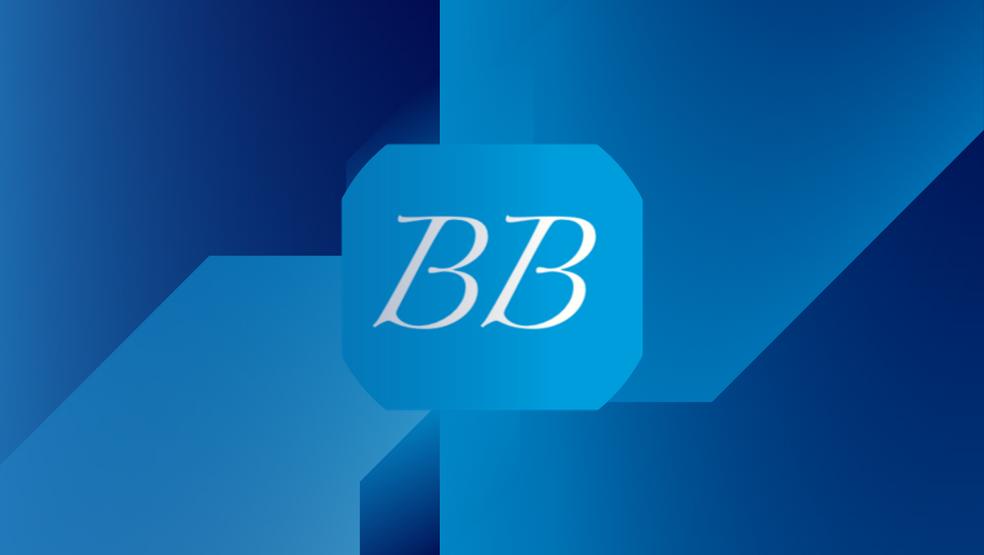


Entrepreneurship can be hairy and scary...
 Megan Deers
Megan Deers
…but also, infinitely rewarding
Trading experiences with fellow entrepreneurs is one of my favourite things to do!
Here are five lessons that have greatly impacted my business over the last two years:
1. Introspection is a vital part of your journey
Being able to assess yourself continually and honestly, is an integral part of your journey as a business owner. The result of such introspection is confidence in who you are, and what you bring to the table.
Your level of self-knowledge determines how well these elements are portrayed through your business. And it allows you to activate your plans accordingly. Your service, expertise, values, business culture, story and - ultimately – your vision is what will attract your ideal client, with the least amount of effort.
Knowing yourself well will ensure you can communicate clearly and directly with your target audience.
Discover your essence
So, discovering your essence and combining it with a viable product or service that serves your client’s needs, is the ultimate business booster.
Is your business an authentic reflection of you and your vision?
Are you confident sharing your product or service with others?
Are you engaging your passions as a business owner?

Does your business easily attract your ideal client?
Is your business showing growth, financially and otherwise?
Knowing the answers to these questions is important.
Answering “yes” to them is crucial to staying motivated and focused on your business.
2. Relationship-building trumps hard selling
Most business owners find it hard to promote their product, service or business venture. As a result, their income is adversely affected.
Do you think it’s possible to do away with hard sales in your business and still build a successful and sustainable enterprise?
It absolutely is!
Taking a forceful stance on sales will alienate more potential clients than you’ll gain. No one enjoys being bombarded with sales talk. Focus instead on educating your clients through valuable information shared, and demonstrating how your
offering solves their problems.
Take your client on a journey
Take your time nurturing prospective clients through their sales journey with you.
Listen, be attentive to their needs, and offer genuinely helpful solutions.
After all, converting a prospect into a raving fan is worth much more than a once-off sale that offers no long-term benefit to either party.
Did you know that building strong and trusted relations with peers, collaborators and clients allows you more and better opportunities to market your business?
Receiving word-of-mouth referrals from trusted connections will accelerate your business growth substantially.
This type of social proof is gold and should not be underestimated in your plan for success.
3. Every entrepreneur deserves and needs a support system
Solopreneurs, particularly, feel that they need to take on this journey alone. This is one of the biggest and most damaging misconceptions among business owners.
Unfortunately, the truth is often realized only after a point of mental and physical burnout is reached.
Your business – particularly in its early stages – is highly demanding of your time, energy and presence.
You wear many hats, inundated by the sheer volume of tasks to be carried out.
This, coupled with the challenge of mastering a myriad of new skills, can quickly lead to overwhelm.
One simple solution to this situation is to ensure you have a strong support system. Whether this comes in the form of practical assistance, coaching, or mentorship, you will be better off
for it.
Your journey does not have to be a lonely one
Entrepreneurship without support is an extremely taxing and lonely journey. It can be demoralizing and adversely affect your health. Simply having someone to reach out to during trying times will help keep you motivated, balanced and moving forward.
It is our mission to change the world through what we do. Thus, I encourage you to give your dreams the best possibility of success by treating them like the valuable resources they are.
Are you struggling to find balance in your life as a business owner?
Do you find the demands of entrepreneurship overwhelming?
Do you have peers who understand your challenges and can offer guidance and support?
I urge you to reach out for support as early as possible in your journey. Mutually beneficial support can be a lifesaver. And being a positive influence on someone else’s success is immensely satisfying.
If you’re open to exchanging entrepreneurial support, I’d be happy to connect.
4. Self-development is an ongoing process
As entrepreneurs, we are constantly learning and building our skill sets. Building a successful business demands us to constantly upskill ourselves, our processes and our systems. Our plans should be firm enough to create momentum while remaining flexible enough to pivot at the drop of a hat!
Be curious, please!
Being curious, and open to learning keeps you competitive, informed, and able to best meet your market’s
demands. And it’s so much fun, too!
On-going education - whether formalized or not – is a sure way of preparing yourself to better manage any challenge in your business. It further develops existing skills, while constantly adding to your arsenal as a business owner.

5. Creativity done your way
In my capacity as a creative and multi-passionate, I often hear entrepreneurs claim they’re not creative. I beg to differ!
Creativity is by no means one isolated or neatly defined characteristic. It comes in many forms. And I believe that everyone is creative. The sooner you recognize and learn to apply your style of creativity, the more possibility you invite into your space.
Why is creativity in business so important?
Engaging creativity in your business adds to the unique appeal of your service offering. Often, it is the finer nuances of who and what you are that others relate to.
“Embrace your brand of crazy.”
– Megan DeersSo, proudly showcase your thinking and working methods. You may be surprised at how many people are drawn to your business because of it!
My divergent thinking processes, my ability to switch between technical and creative topics, and how I reframe words and concepts are all examples of how my creativity manifests. What’s your secret creativity sauce?
A few final words of advice that will hopefully inspire:
• Never forget your purpose, the reason for creating your business.
• Permit yourself to fully commit to your dreams.
• Ensure you’re feeding your passions every day.
• Aim to find your flow – that inspirational rhythm that allows things to happen as if by magic!
• Never forget that you are the person building this business. How it is built depends on you.
So, don’t be afraid to completely recreate it, if necessary, to better align with your dreams.
• Ultimately, it’s your call, your rules, and your vision.
Founder of Paradox Rocks!, Megan Deers is a Technical & Creative Copywriter, Content Creator and Communications Mentor. Her curiosity, love of learning, and uncanny knack for switching between Tech and Creative projects are what her business celebrates.
Contact Megan at: +27 76 5822 840 meg@paradox.com
www.linkedin.com/in/megan-deers
Break the Habit of Overthinking
 by Dr. Mary Meduna-Gross
by Dr. Mary Meduna-Gross
Are you an overthinker?
I have been a chronic overthinker most of my life. I believe that we have been conditioned to be overthinkers, and for some of us; we really like the sense of power that comes from finding connections and solutions. As leaders, this is further reinforced by the myth that the leader must have (or find) all of the answers.
For me, the experience of overthinking is mostly painful with just enough success to keep me coming back to it. The feeling of success comes when the issue is finally resolved. I tell myself that it was resolved because I ‘figured it out’, when in reality; the situation probably didn’t really need my micro-management. I could’ve gotten to the result without the struggle.
Three Ways Overthinking Shows Up for Me
These are three distinct experiences when I find myself getting carried away with overthinking. Each of these three experiences stand alone, but also interrelate with one another. When I am experiencing more than one of these at a time, I am literally wiped out. I am mentally, emotionally, and physically exhausted. (Translation: I’m cranky and not fun to be around).
A Sense of Urgency
The symptom that catches my attention the quickest is a sense of urgency. When I’m in this state, it doesn’t matter what I’m doing, I’m always in a hurry. My inner chatter is telling me that I have several other tasks that need to be attended to immediately. This voice insists that I hurry up with this task, so that I can get to the others.
Compounding this sense of urgency is a tendency to set unnecessary or unrealistic timelines for myself. It took several experiences of these missed timelines for me to realize that I was the one setting the timeline which meant that I could also change the timeline.
Confusion or Overwhelm
Some days I feel like I don’t know what the heck I am supposed to be doing. Even with my weekly plan outlined, sometimes, I can’t decide where to start. In these situations, I tend to start several of these weekly tasks (and other tasks that seem important at the time) and move on to the next before I finish anything. Now, I have several tasks that need to be completed and still the inability to focus long enough to finish one.
Avoiding Decision Making
Ironically, avoiding decisions from this state of overthinking is probably a good choice. However, there are times where decisions need to be made even when we don’t have ALL of the data that we would like to have. Sometimes, we have to make a decision to get the information that we need.
It is helpful to remind myself, in these situations, that I don’t have to make the ‘final decision;’ I just have to make the ‘next decision’. You see, sometimes, my inner chatter tells me that I need to see ALL of the options, ALL of the obstacles, or ALL of the potential consequences before I decide anything. The truth is that I just need enough information to make the next small decision; to take the next small step.
In my article, “You Don’t Have to Stay Small,” that appeared in the January issue of the ConsciousPreneur Magazine, I noted that we have two competing systems. One is our spirit or True self. This is the gas pedal and is there to keep us growing, expanding and creating a life that is meaningful for us. The other system is our ego and works as our braking system. It is there to keep us safe and comfortable. At all times, we get to decide which system to lean into.
Retraining How We Pay Attention
One of the quickest and easiest ways to take our foot off the brakes and hit the gas is to retrain how we pay attention. In his book, The Open Focus Brain, Dr. Les Femi tells us that how we attend or pay attention to our experiences has a direct impact on our nervous systems.
We have been conditioned to pay attention in a way that narrows our attention to limited stimuli and positions ourselves as separate from everything and everyone else. This is the same way we attend when we are in a state of fight or flight. Our
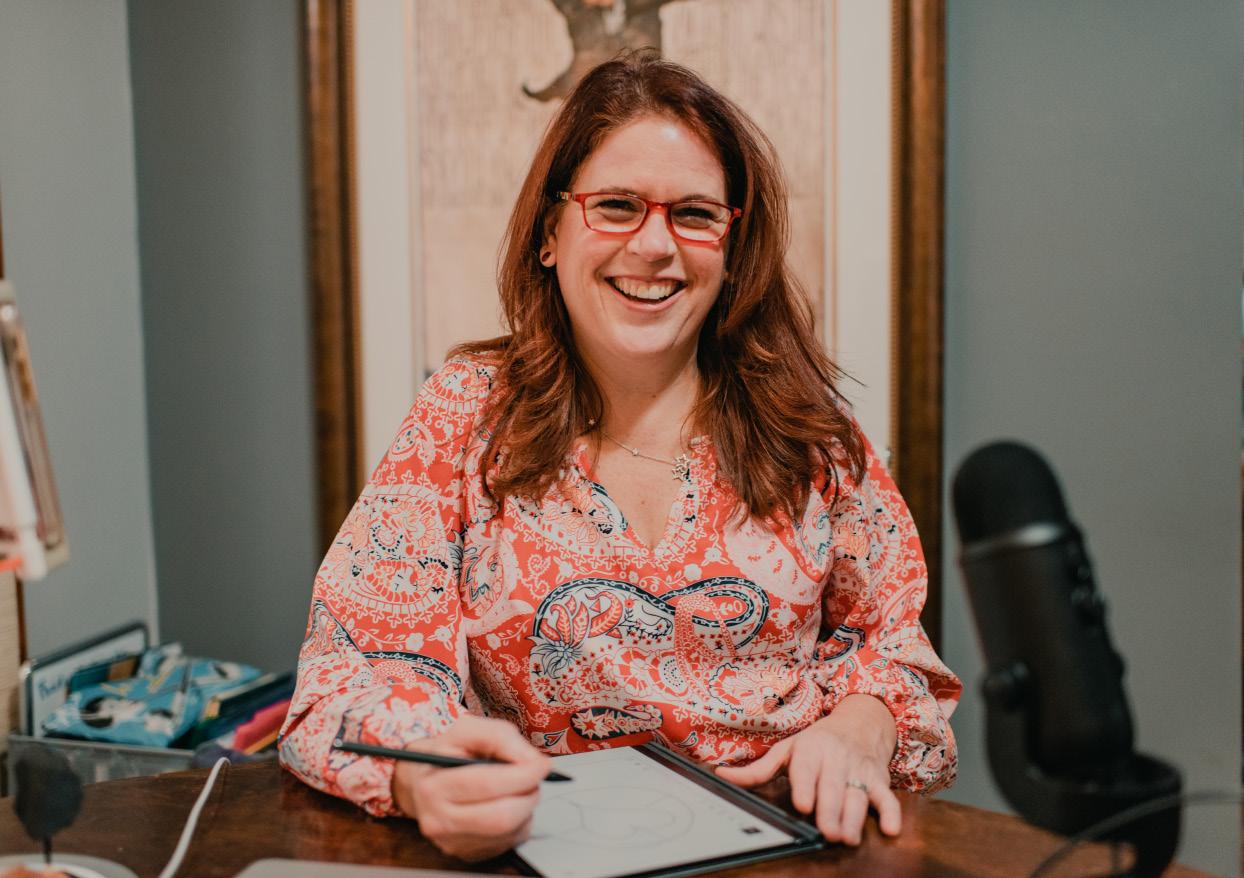
awareness and vision narrow to focus on the threat (problem), and we see ourselves as separate from everyone and everything. Growing up, we were told to “Pay attention to the teacher,” “concentrate,” and “be careful.” All of these commands directed us to focus on them and what our systems thought were important. The habit of overthinking is simply an extension of these commands. This rigid, effortful way of paying attention makes it more likely that we will over-react in ways that are fearful, angry and resistant. When we do, the experience actually convinces us that we need to narrow our attention or use even more effort to resolve the problem that we are experiencing.
Alternatively, when we pay attention in a flexible way, we are more accepting, comfortable, aware and in the flow. When we learn to diffuse our attention and immerse ourselves in our experience, our nervous system moves out of a stress response and into a relaxation response.
The way we pay attention can be measured by electroencephalogram (EEG). During normal waking hours, our brain wave patterns are in the beta range. When we change how we pay attention to a diffuse and immersed style, our brain wave patterns shift to lower frequencies, including theta and
alpha. These frequencies are associated with relaxation, meditation, creativity, imagination and learning.
Using Open Focus to Retrain Your Attention

The Open Focus method utilizes a sustained awareness of space to diffuse our attention and to help us create an immersive experience. “When people gently direct their awareness to imagining and feeling space, the brain responds immediately, dropping into whole-brain synchronous alpha”. (Femi & Robbins, p.38). In this state, most participants notice positive changes in mood, tension and anxiety. They also report improved memory, clearer thinking, and heightened creativity.
Learning Open Focus
The practice of open focus is incredibly simple to learn. It often starts as a guided meditation until one understands the process. With practice, the shift to alpha becomes quicker and more obvious. The challenge is to commit to the practice, especially once progress has been experienced. This is because, with this practice, our old beliefs and behavior patterns are released, and new beliefs and behavior patterns are created. This is a threat to the ego, and it will attempt to convince you that you’ve done enough.
If you’d like to break the habit of overthinking and learn to create with ease, in a community of like-minded entrepreneurs, you are invited to connect with us at the Fully Alive group on Facebook. This is the space that I have created where we can dive deeply into this practice and other topics that will help you create the life and business that you desire–with ease!
Dr. Mary Meduna-Gross is a mindset coach, helping conscious business leaders be happier, healthier, wiser, and connected to unlimited possibilities.
The experience of overthinking is mostly painful with just enough success to keep me coming back to it. The feeling of success comes when the issue is finally resolved.
The Sad Truth Behind Exit Planning
 Eunicia Peret
Eunicia Peret
The Sad Truth Behind Exit Planning
By Eunicia Peret, CEO and Founder of the Empowered Financial PlannerWhy is it that most business owners don’t think about exit planning until it’s too late?

The reality is that most people don’t have a succession plan in place, nor have they given any thought to how they will exit their business. This can be a huge mistake, as it can put them in a position of settling with much less than if they had had a strategic and flexible plan in place.
Exit planning is a vital aspect for all businesses, and it is especially critical for small businesses and individual business owners. One of the reasons is the fact that small businesses typically don’t have the same resources
or access to expert support that larger companies have. Yet, the changes a smaller business owner can put in place make a world of difference in how much more they are able to keep in their pocket.
Some of the key issues we see with exit planning include limited access to capital, lack of strategic tax minimization planning, and very importantly, an inability to separate the owner’s financial outlook from that of the company’s financial position.
How many times have we heard of business owners trying to obtain funding without success, despite countless attempts and appeals to the traditional banking system? The list of reasons from the banks for a decline or approval for a remedial sum of money are often a mile long. That process is nothing short of
tedious, frustrating, and many times feels like a shaming experience for the business owner. What we have found is that this should not be the case for entrepreneurs and business owners.
There are better options to gain access to capital, whether the goal is to focus on growth or to position the company for a sell-off. In either case, in the absence of access to capital, business owners are sometimes forced to choose between raising funds and potentially having to give part of their company away, and boot strapping in a way that may hinder faster growth. But what if there were alternative solutions? The truth is that not only do these solutions exist but more importantly, there are alternative ways to raise capital that can empower versus hinder the business owner.
The topic of strategic tax planning is a heavy one to unpack. Not because it is impossible to address but because there are so few experts who truly understand the difference between planning to file taxes and planning to strategically minimize the business owner’s tax bill using various areas of the tax code.
When it comes to focusing on minimizing taxes for the current tax year, there are many strategies that are part of the tax code. And yet, most people don’t know about them. Some may feel that they do not qualify, while others do not have access to proper advice, and others simply have no idea where to start or what may even be possible. Still other people may have experienced a sliver of what that tax planning may look like but stop there because they work with companies only focused on single solutions. We call those “one trick ponies,” and business owners who have experienced the difference between buying a one trick pony and a truly strategic way to optimize taxes know the difference.
The goal is not to avoid paying taxes, but instead the focus should be for the business owner to keep more of their hard-earned money so they can re-invest in the company, in the employees and in their efforts to grow.
The goal is not to avoid paying taxes, but instead the focus should be for the business owner to keep more of their hard-earned money so they can re-invest in the company, in the employees and in their efforts to grow. It is all about being strategic with the money that can be kept, versus given away.
On the other hand, many business owners have no idea that tax planning before receiving a letter of intent from a potential buyer is critical. As a result, many end up paying too much in taxes while other similar business owners get to enjoy the fruits of their labor by keeping more of the growth produced by the blood, sweat, and tears that went into building their company.
The inability to sometimes separate the owner’s financial outlook from that of the company is another major problem we see often. Business owners and entrepreneurs give it their all to build their dreams and so many find themselves realizing that a separation between personal wealth and business finances should have been there from the very beginning. Our hope is that more entrepreneurs and business owners realize this before it is too late or too costly to undo.
But how can one focus on both the personal and business finances when investing in the business seems to produce the best returns? The reality is that it is easier said than done, and it requires careful planning. It requires implementing a strategy and a team that can help execute it in a manner that will not have you as the business owner lose sleep at night. It requires a delicate balance that employs flexibility to account for both growth and potential tough times ahead.
Let’s not minimize the fact that planning for an exit strategy can be hard, and it can certainly feel overwhelming. The great news is that it doesn’t need to be.
It is imperative for entrepreneurs and business owners to ensure they have the right team in place to help them with exit planning. And while exit planning is often a long-term goal, the sooner the correct pieces are in place, the sooner the business owner will start benefiting from being more optimized with their taxes along with seeing their wealth grow faster and more strategically.
 About Eunicia Peret
About Eunicia Peret
Eunicia is an accomplished wealth strategist and cash consultant with over 15 years of experience in the financial services industry.
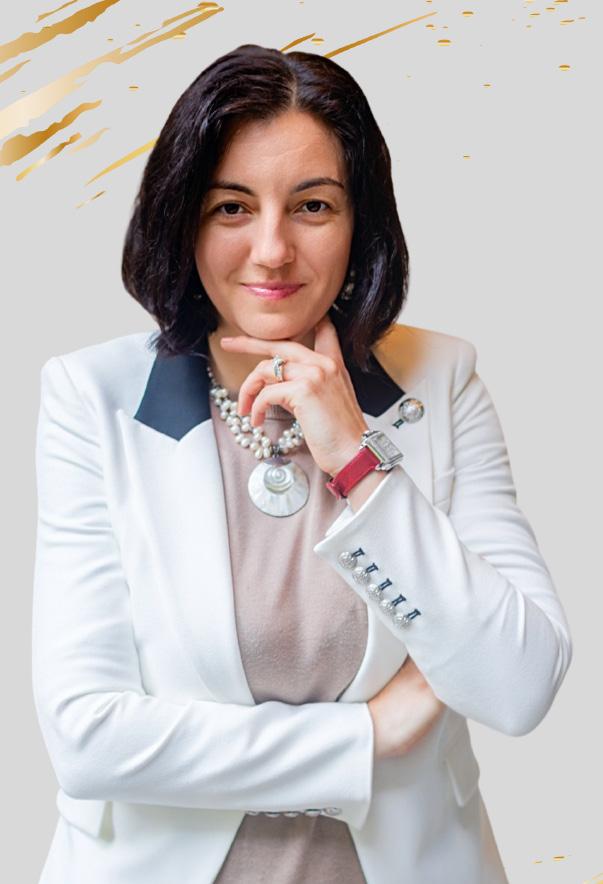
She created the Wealth Freedom Formula, which is a customized hands-on financial consulting program offering end-to-end wealth optimization strategies that have historically only been leveraged by the ultra-wealthy. The tried-and-true personalized method has delivered significant bottom line improvements to hundreds of clients because it leverages a quarterback approach to ensure the client’s financial team is working in unison to minimize financial leakage.
Learn more: https://www.empoweredfinancialplanner.com/
THE PRODUCTIVE ENTREPRENEUR


THE SECRETS TO GETTING EVERYTHING DONE EXECUTIVE SUMMARY
The Battle for Productivity
Productivity isn’t easy. There are so many things that can cause us to falter or stop.
Mute notifications. All day long we receive dozens – or even hundreds – of notifications: emails, text messages, Slack, Facebook, phone calls, and more.
Being busy doesn’t mean you’re productive. Ensure you’re getting the right things done.
Four pillars of productivity. In this book, you’ll discover the four pillars of productivity. It will help you get the right things done at the right time. The four pillars are: Systems Over Goals, The Early Bird Gets Everything Done, Kill Your Distractions, and Slay Your Dragons.
Systems Over Goals
The issue with goals. While goals can be really helpful, they aren’t always ideal. Goals have one big problem: they have a termination point.
You feel like a failure until you’ve completed your goal. Until you’ve reached your goal, you feel like a failure. You also can’t measure success until you cross it off your list. This can lead to feeling constantly defeated.
Systems are more effective than goals. They let you make progress each day and guarantee your success.
What is a system? A system is a series of actions you consistently take to reach your desired goal. If you follow the system, you eventually reach the goal.
Goals can be too rigid. While goals can be good, they can also be very rigid and unmoving. Being overly focused on a goal can give you tunnel vision. You miss all the progress you made even if you didn’t totally complete your goal.
Goals limit your happiness. Once you’ve hit your goal, your feeling of happiness fades. You have to set another, bigger goal. A system, on the other hand, let’s you always feel like you’re making progress toward something.
Systems work better for entrepreneurs. They’re more flexible. If something isn’t working, you can change it. Additionally, systems have day-to-day improvements built into them. This gives you a sense of progress and forward movement.
Evaluate yourself and the systems you have in place. Do you have systems that are moving you toward your big goals?
The Early Bird Gets Everything Done

The most successful entrepreneurs tend to be early risers. Tim Cook, Richard Branson, Howard Schultz, and many other business leaders rise early so that they’re more productive.
Early risers are more productive. While night owls are prone to negative thought patterns, early risers tend to achieve more, get better grades in school, and have more opportunities throughout their lives.
Go to bed earlier. While the late evening hours may feel like a good time to be productive, your energy is limited. If you have trouble going to be earlier, start small. Go to bed an hour earlier and rise an hour earlier.
Turn off screens several hours before bedtime. Using screens in the hours leading up to bed has been shown to disrupt sleep patterns.
Create a healthy sleep routine. A
sleep routine enables you to go to sleep and rise at the same hour every day. Eventually you may find that you don’t need an alarm clock.
Get some exercise. Exercise has been scientifically proven to increase time spent in deep sleep, as well as improve the quality of your sleep.
Move your alarm clock away from your bed. This will force you to get up out of bed in the morning and prevent you from hitting the snooze button.
Splash cold water on your face. This can help wake you up when you’re groggy.
Give yourself a motivating reason to get up. The more motivation you have to get out of bed, the more likely you’ll want to wake up early.
Kill Your Distractions
Distractions kill productivity. Emails, Slack messages, text messages, and phone calls - the distractions are endless.
Make your plans the night before.
This can include both small plans, like what to wear and what you’ll eat for lunch, as well as bigger plans, like planning on working on a project from 8:00 - 10:00 AM. By planning in advance, you eliminate the need to think about it and can focus simply on getting things done.
Cut out social media. Few things are more distracting than social media. By only allowing yourself to be on social media during specific times, you can ensure that you’re focused on doing the work that matters the most to you. Use your most productive hours for real work, not social media.
Create boundaries for interruptions. There will be times when you need to check email, make phone calls, or respond to text messages. But you should only do this during specified times each day. This enables you to focus on meaningful work.
Create a productive work space. Designate a space where you only do productive work. This trains your brain to know that when you’re in that space, you’re going to be 100% focused on getting things done. Have a separate space for doing fun things. Ensure
that you keep the two apart.
Make time for rest and play. Your brain needs time to unwind, relax, and take a break. You can’t be 100% focused all day long. By taking time to rest and play, you allow your brain to recharge and refocus.
Slay Your Dragons
Identify your most challenging tasks. Your “dragons” are your most challenging, important tasks. Slay your dragons first thing each day.

It’s more productive to do your hard tasks first. It can be tempting to do easy tasks first in order to get a sense of accomplishment. However, research has demonstrated that those who do their most challenging tasks are generally more successful and productive.
Attack your most difficult tasks first. If you want to reach your fullest potential, make a plan to tackle your hardest, most important tasks first thing each day. If you don’t plan to do it, you’ll inevitably gravitate toward easy tasks.
Set yourself up for success. If you choose your hardest tasks first, it sets you up for success for the rest of the day and the next day as well.
The most successful entrepreneurs tend to be early risers.
Creating a world where conscious business leaders feel happier, healthier, wiser and connected to unlimited possibilities, and one where; they are fully ALIVE.



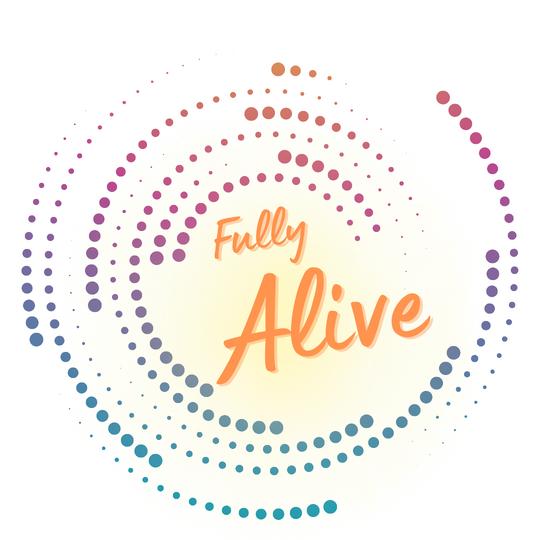
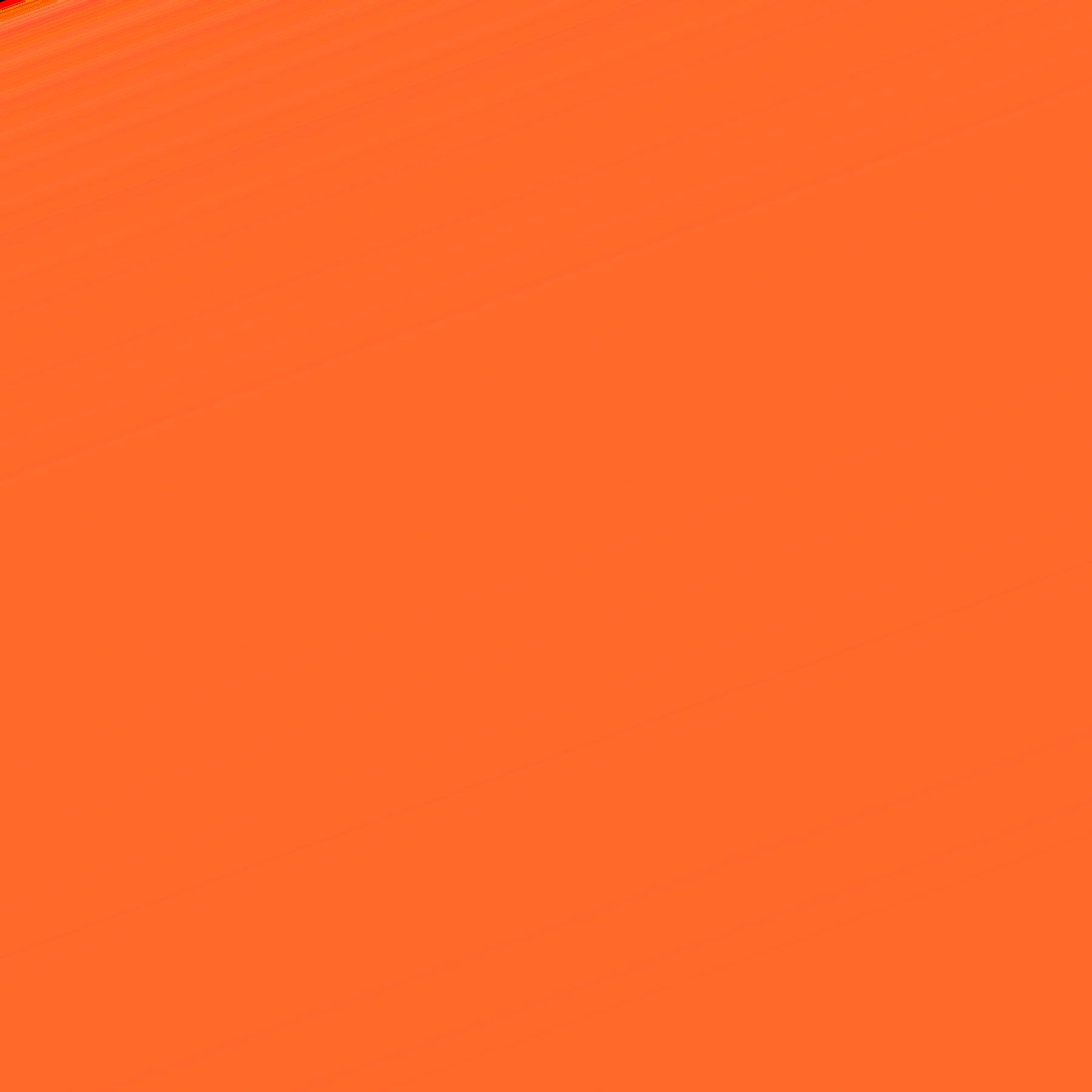
Stellar Customer Service
Kwik Turn-Arounds Competitive Pricing Quality Work


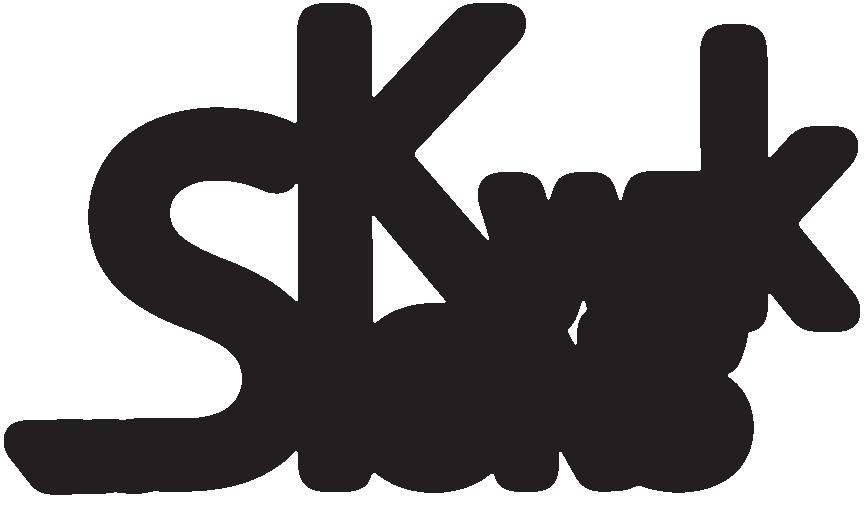
Yes, we make signs but so do the other 24 signs shops in our city. What sets us apart from the competition is customer service. Not only do we focus on producing high quality signs with kwik turn-arounds, it is our mission to make sure our clients experience an easy and painless ordering process. We’re constantly managing deadlines to make sure that great looking signage is checked o your to-do list!
We’ve been helping our clients since 1989 and we hope to add you to that list!

